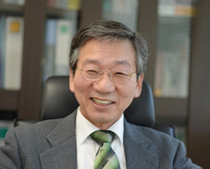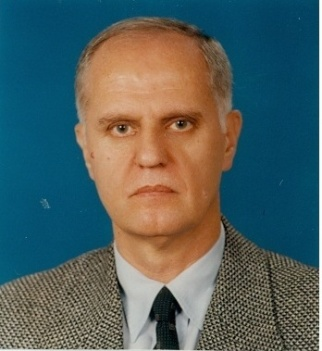
Prof. Kenzo Nonami
Chiba University, Japan
President, Autonomous Control Systems Laboratory, Ltd., Japan

Chiba University, Japan
President, Autonomous Control Systems Laboratory, Ltd., Japan
Dr. Kenzo Nonami received Ph.D. degree in Mechanical Engineering in 1979 from Tokyo Metropolitan University. He joined Chiba University as an assistant professor from 1980 to 1985. He was a research scientist and a senior research scientist at NASA in USA from 1985 to 1988 during two years. After that he became an associate professor from 1988 to 1994. Since 1994, he has been a full professor in Department of Mechanical Engineering at Chiba University. Dr. Kenzo Nonami was in charge of Vice President of Chiba University from 2008 to 2013. Right now, Dr. Nonami is a professor at Chiba University, a president of his own company called gAutonomous Control Systems Laboratory, Ltd.h and a director of Mini-surveyor Consortium which includes more than 200 companies. His recent research interests are fully autonomous drones, namely, fully autonomous unmanned multi-rotor helicopters and VTOLs as UAVs with GPS or GPS-denied environments, advanced robotics and mechatronics.
Drones applications offers a gtasteh of possible civil and public domain applications in which single or multiple drones may be used. As the roadmap of the UAS integration into the global airspace is formulated amidst current obstacles and skepticism, it is only logical to consider that the spectrum of possible applications will be much wider in the years to come. At the present stage, Drones have either been considered for or have seen very limited utilization in a wide range of applications that include but are not limited to power line inspection; pipeline inspection; ship inspection; mine inspection; dam inspection; anomaly detection/prevention; early fire detection and forest protection; hazard monitoring; traffic monitoring; environmental monitoring; search and rescue operations; emergency response; border patrol; harbor patrol; police surveillance; aerial photography; SWAT support; imaging and mapping; intelligence, surveillance, and reconnaissance (ISR); chemical spraying; crop dusting; night vision; and entertainment industry and filming. However, in addition to enabling and mature technologies, Drones utilization will also be affected by cost considerations, certification restrictions and supply and demand. This presentation introduces a principle of flight control of drones at first. Secondly, several applications will be introduced including the disaster mitigation. Finally, the prospects of future dorones.

Emeritus Professor
Sabancı University, Istanbul, Turkey
Asif Šabanović, Emeritus Professor at Sabancı University, Istanbul. He received B.S. , M.S. and Dr. Sci. degrees from University of Sarajevo. Since 1970 till 1991 he had been with Energoinvest-Institute for Control and Computer Sciences, Sarajevo. From 1991 he has been with University of Sarajevo, Department of Electrical Engineering. He has been Visiting Researcher at Institute of Control Science - Moscow (1975-1976). Visiting Professor at California Institute of Technology-CALTECH, Pasadena (1984-1985), Visiting Professor at Keio University, Yokohama (1991-1992), Full Professor at Yamaguchi University, Ube (1992-1993), Visiting Professor at University of Maribor - Maribor-Slovenia (Acad. Year 1986, 1988, 1989), Head of CAD/CAM and Robotics Department at Tubitak - Marmara Research Centre, Istanbul (1993-1995). From 2012 member of Academy of Sciences and Art, BiH. His fields of interest include Control Systems, Motion Control Systems, Robotics, Mechatronics and Power electronics.
Motion control technology is allowing development towards applications beyond structured environment of industrial plant and is making its way into unstructured world inhabited by people. Real-world haptics interactions associated with accurate models is becoming important technology with potential for application in many different fields like surgery, teleoperation, cooperative work, microsystems, education etc. Such applications of motion control technology require shifting a focus to the models, control strategies and algorithms needed for systems to work, interact and cooperate with humans or other artifacts in unstructured environment. This developments are opening numerous challenging issues to be solved in order to develop practical and competent systems that support of the human operator, are fault tolerant, safe, easy to use, capable of adaptation to long term changes in environment. In this presentation we will discuss a number of the emerging issues within motion control technology including but not limited to new algorithms that allow concurrent force/position control, control of new PZT actuators, control in micromanipulation, functionally related systems ...